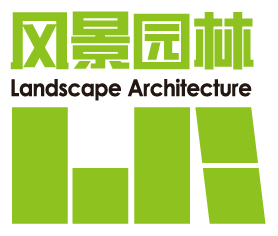Abstract:
Objective This research aims to explore the systematic application pathway of the theory of scenes in the construction of Beijing Garden City. Addressing current deficiencies in Beijing’s green space development, such as insufficient integration of greenery perception and function, lack of distinctive character, low ecological efficiency of urban spaces, and inadequate scene operation capabilities, the research constructs a human-oriented garden scene construction framework for Beijing, grounded in the theory of scenes and oriented towards planning practice. The core objectives are to facilitate the transformation of Beijing’s urban spaces from a singular “garden landscape” model, primarily focusing on parks and green spaces, towards a comprehensive “garden scene” model that covers the entire urban area and integrates diverse functions. This transformation seeks to enhance citizens’ sense of well-being and belonging, ultimately achieving the high-quality development goal of harmonious coexistence between humans and nature.
Methods The research employs an interdisciplinary approach, integrating knowledge from such disciplines as environmental psychology, sociology, ecology, urban planning, and landscape architecture. The theory of scenes is utilized to analyze the spatial form and functional development of the Garden City. Firstly, the conceptual framework of the theory of scenes, including its subjective and objective elements and their interrelationships, is systematically reviewed, and its semantic expressions are localized for the Chinese context. A literature review is conducted on the theory’s application and research in Garden City construction, with a focus on the following three key directions: Emphasizing subjective dimension value analysis, addressing both the overall requirements of garden scenes and the differentiated needs of specific scene types, and highlighting the synergistic role of green spaces in landscape character, social interaction, and ecological performance. Questionnaire surveys are used to decipher Beijing citizens’ subjective value orientations towards garden scenes. The Beijing’s Garden Scene vision system is explored through the lenses of authenticity, expressiveness, and belongingness. Applying the objective elements of Scene Theory to establish a research process: “Characterizing Spatial Contexts — Identifying User Demands — Developing Amenity Systems — Integrating Activities across Developmental Stages”. This framework technically translates the garden scene vision, detailing the construction elements, characteristics, and directions for eight types of garden scenes. Finally, the theory of scenes framework and survey findings are innovatively synthesized into a tripartite planning practice system comprising “design guidelines — implementation pathways — policy support”, forming the core of the Beijing's Garden Scene planning and design guidance system.
Results The research yields the following key outcomes: 1) Value System Construction: Through the localized translation of the theory of scenes’s subjective dimensions and aligning them with Beijing’s capital character, “Beijing flavor” culture, and North China regional characteristics, the core value vision of “Lush & Healthy, Diverse & Shared, Unique & Beautiful” for Beijing’s Garden Scenes is proposed. 2) Amenity Module Innovation: Based on the objective elements of the theory of scenes, an amenity framework featuring 17 distinct modules is innovatively constructed, involving canopy coverage, microclimate regulation, boundary integration, and therapeutic landscapes, etc. This system provides universal technical strategies for creating ecological, human-centered, and distinctive spaces. 3) Differentiated Strategies for Scene Types: Tailored core construction strategies and planning pathways are formulated, closely integrating the spatial background characteristics, green space development features, and human demand models of Beijing’s eight garden scene types. These strategies integrate design guideline principles with specific scene requirements and embed them within existing initiatives like urban renewal. 4) Implementation and Policy System: Recognizing the spatio-temporal evolution characteristics of scenes (progressing through Environmental Improvement → Functional Implantation → Catalyst Activation stages), the research explores an eight-faceted policy framework covering aspects like optimized green space metrics, landscape replacement policies, adaptable green space controls, etc. These policies ensure the effective translation of planning concepts into implementation and management controls.
Conclusion Garden scene construction represents the refined implementation and effective operationalization of the planning concept of Beijing Garden City at the urban spatial level. The process of scene building translates the macro concept of human-nature symbiosis into tangible, perceptible, and enjoyable micro-spatial experiences within citizens’ daily life. The research constructs a garden scene construction pathway framework for Beijing guided by the theory of scenes, led by core values, grounded in amenity modules, characterized by scene-specific strategies, and secured by implementation policies. This framework effectively addresses the current challenges of integrating function, ecology, and culture in green space development. It provides significant theoretical support and a practical paradigm for achieving high-quality, sustainable development of megacities like Beijing.

 下载:
下载:
